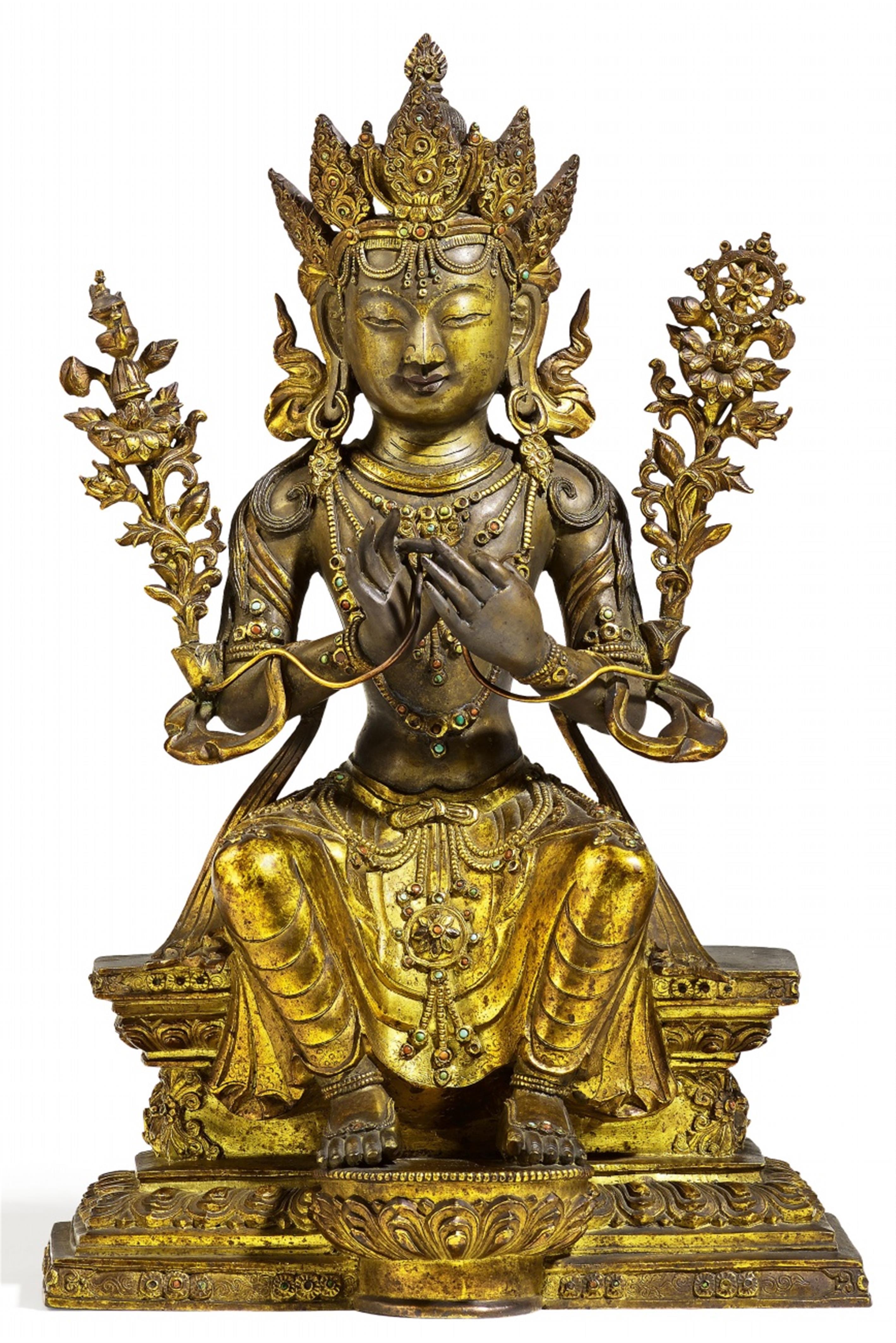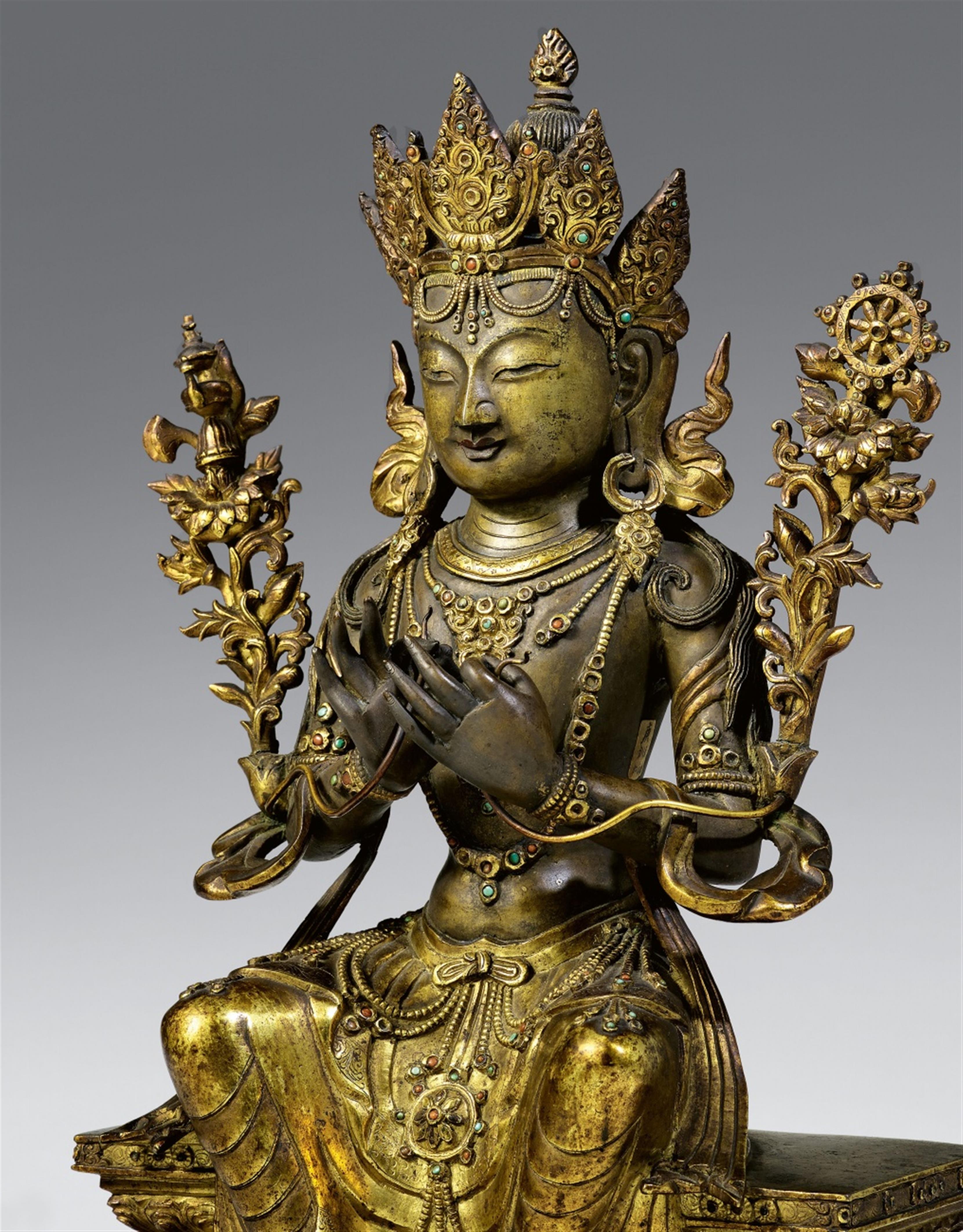A rare and exquisite Sinotibetan or Mongolian gilt bronze figure of Maitreya. 17th/18th century
A rare and exquisite Sinotibetan or Mongolian gilt bronze figure of Maitreya, seated in European way (bhadrasana) on a rectangular stepped throne with his feet resting on a circular lotus blossom. His hands are in the gesture of turning the Wheel of Law (dharmacakra mudra) and hold the stems of two lotus flowers, supporting the water vessel (kundika) and the Wheel of Law (cakra). He wears a dhoti with beaded jewellery, a shawl billowing elegantly around his arms, and he is richly adorned with a five-leafed tiara with beaded strands resting gracefully on his forehead, earrings, necklaces and bracelets, all inset with coral and turquoise. The face and body are ungilded, but display a smooth deep brown patina, the eyes and lips are painted with pigments. The base is sealed, the base plate with an incised double-vajra. 17th/18th century.
Height 37 cm
The iconography of the present work represents Maitreya - in Tibetan byams-pa means the loving one - in his aspect of a bodhisattva, who resides in the Tushita heaven. He is ready to rise from his throne and come into this world to teach the Dharma (Buddhist Law), thereby heralding an age that will be a complete victory for Buddhism. That is why he is called Maitreya, the Buddha of the Future. His seated posture known as bhadrasana (auspicious posture) or pralambapadasana (extended legs posture) is usually reserved for images of Maitreya or Buddhas preaching in their respective heavens.
十七/十八世紀 藏漢風格或蒙古 銅鎏金彌勒菩薩立像
來源:China Bohlken,柏林,由Theodor Bohlken (1884-1954) 蒐集
德國斯圖加特迪根漯河的Friedrich Wilhelm Schmidtmann收藏(1885-1960), 由德國埃森的Emilfranz Maurer(1920-2000)於1963年繼承
可比:夏景春著,《般若之光:景春藏金銅佛像》,瀋陽2004年,圖版第145-146號
Provenance
China-Bohlken (Theodor Bohlken, 1884 - 1954), Berlin
Friedrich Wilhelm Schmidtmann (1885 - 1960), Stuttgart-Degerloch, bequeathed in 1963 to Emilfranz Maurer (1920 - 2000), Essen
Literature
Compare two similar figures in: Xia Jingchun (ed), Banruo Zhi Guang: Xia Jingchun Cang Fo Jianshang (Buddhist Statues Collected by Xia Jingchun), Shenyang 2004, no. 145 and 146




